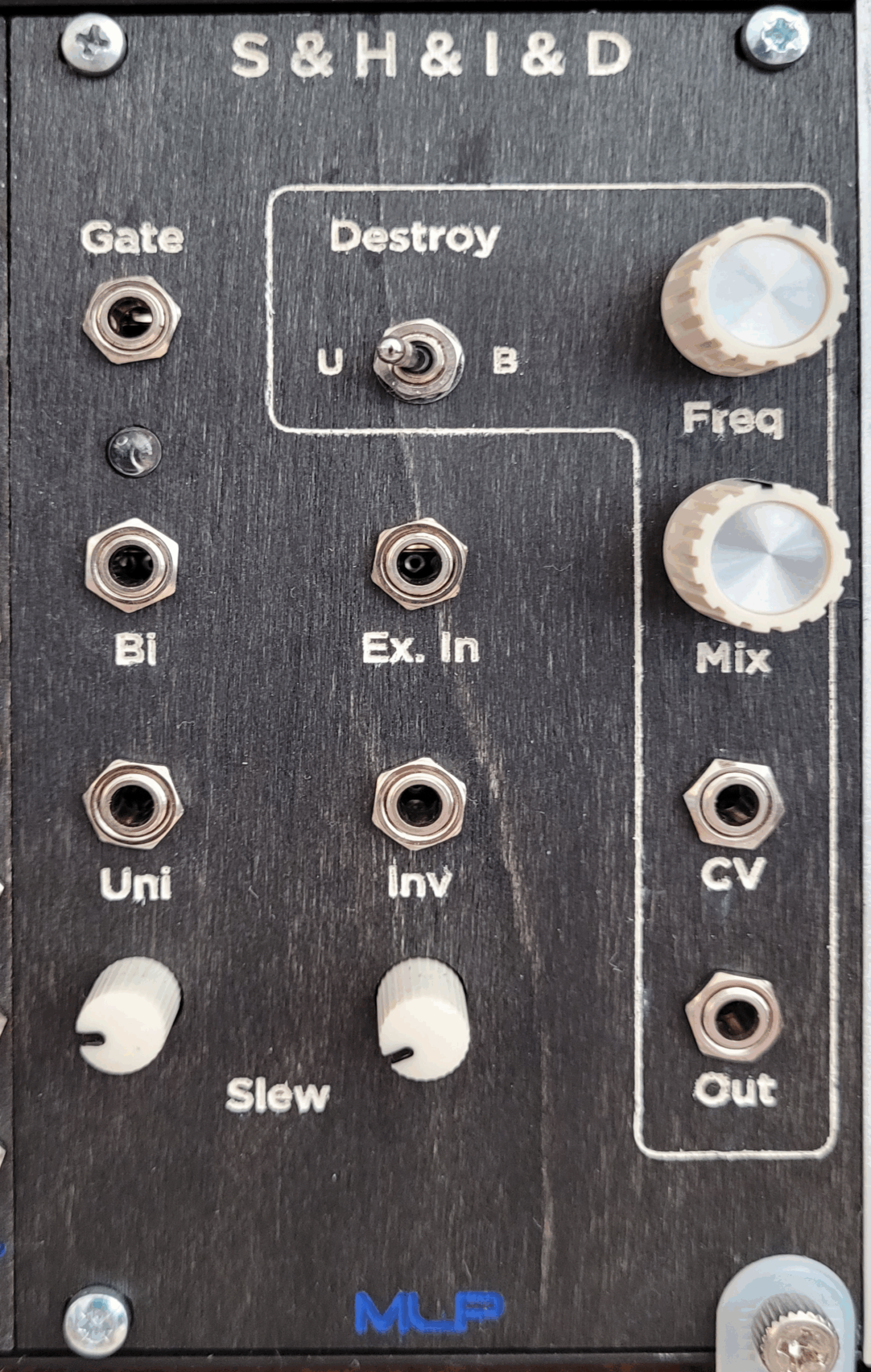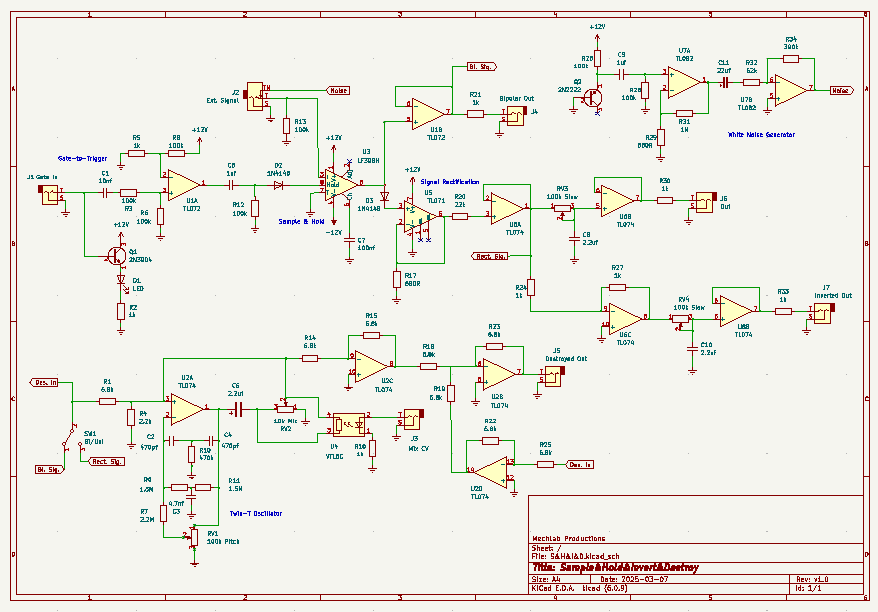
Sometimes I feel lazy. Sometimes I don’t feel terribly like coming up with a clever name for a module. Sometimes I just give up and name the damned thing for what it does. In this case, this module samples and holds, and inverts, and destroys. Just like it says on the tin.
Built around an LF398 monolithic sample and hold IC, and standard transistor-based white noise generator, S&H&I&D’s basic offering is a 10Vpp (+5V/-5V) sample and hold. From here I’ve done some signal rectification to isolate only the positive voltage changes for a unipolar output with slew control. Then, I’ve inverted this to create the mirror signal, also with slew control.
Of course, I couldn’t stop there. I haven’t done any destroying yet. That comes in the form of signal modulation via a variable-rate twin-T oscillator. The held voltage is fed through the oscillator and then the modulated and original signals are summed at a mixer stage. With a switch to select between a bipolar and unipolar held voltage signal.
And the best part is that all of the outputs are available simultaneously.
Schematic
As with any schematic found on the internet, exercise caution when building. Test the build before plugging it into your case. If you find mistakes in the schematic, or you have recommendations for improving the design, feel free to contact me and let me know.

BOM
- Capacititors
- 470pf (2) C2, C4
- 1nf (1) C5
- 4.7nf (1) C3
- 10nf (1) C1
- 100nf (1) C7
- 1uf (1) C9
- 2.2uf (2) C8, C10
- 2.2uf electrolytic (1) C6
- 22uf electrolytic (1) C11
- Resistors
- 680R (2) R17, R29
- 1k (8) R2, R5, R16, R21, R24, R27, R30, R33
- 2.2k (1) R4
- 6.8k (8) R1, R14, R15, R18, R19, R22, R23, R25
- 22k (1) R20
- 62k (1) R32
- 100k (7) R3, R6, R8, R12, R13, R26, R28
- 390k (1) R34
- 470k (1) R10
- 1M (1) R31
- 1.5M (2) R9, R11
- 2.2M (1) R7
- Transistors
- 2N2222 (1) Q2
- 2N3904 (1) Q1
- Potentiometers
- 10k (1) RV2
- 100k (3) RV1, RV3, RV4
- ICs
- TL071 (1) U5
- TL072 (1) U1
- TL074 (3) U2, U6, U8
- TL082 (1) U7
- LF398 (1) U3
- Vactrol (1) U4
- 1N4148 diodes (2) D2, D3
- LED (1) D1
- SPDT switch (1) SW1
- Audio jacks (6) J1, J3, J4, J5, J6, J7
- Switched audio jack (1) J2
Design Notes
The original plan was to use full-wave rectification on the bipolar output, but I kept running into issues trying to use both the bipolar and full-wave rectified unipolar signal simultaneously. The half-wave rectification was a design compromise. I’m open to suggestions if you find a solution.
It didn’t occur to me until writing up this description that I could have performed a separate half-wave rectification on the bipolar signal to isolate only the negative voltage changes instead of inverting the unipolar signal. This wouldn’t have technically been an inverted signal, but it would have provided more variety in the output options.
Demo
Did you build this? Let us know in the comments below!

Leave a Reply